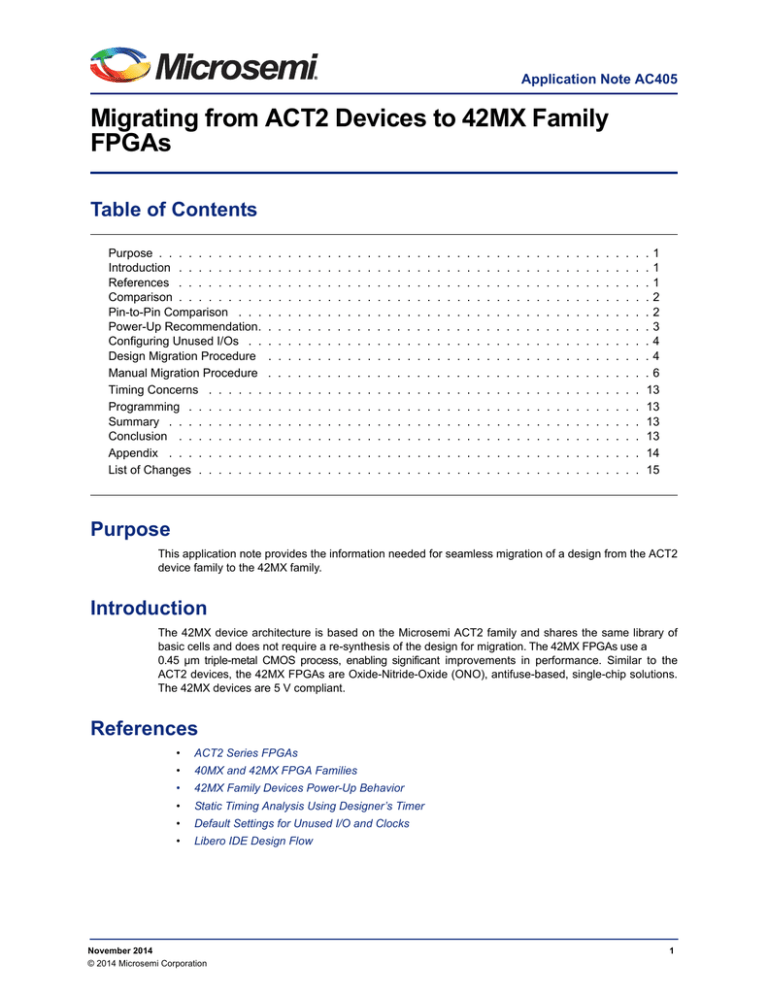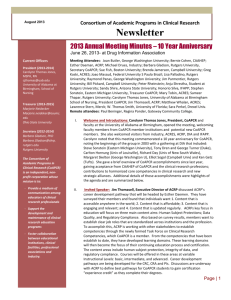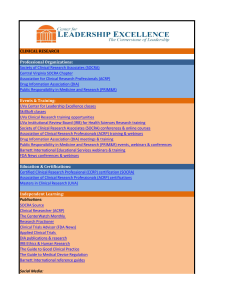
Application Note AC405
Migrating from ACT2 Devices to 42MX Family
FPGAs
Table of Contents
Purpose . . . . . . . . . . .
Introduction . . . . . . . . .
References . . . . . . . . .
Comparison . . . . . . . . .
Pin-to-Pin Comparison . . .
Power-Up Recommendation.
Configuring Unused I/Os . .
Design Migration Procedure
Manual Migration Procedure
Timing Concerns . . . . . .
Programming . . . . . . . .
Summary . . . . . . . . . .
Conclusion . . . . . . . . .
Appendix . . . . . . . . . .
List of Changes . . . . . . .
.
.
.
.
.
.
.
.
.
.
.
.
.
.
.
.
.
.
.
.
.
.
.
.
.
.
.
.
.
.
.
.
.
.
.
.
.
.
.
.
.
.
.
.
.
.
.
.
.
.
.
.
.
.
.
.
.
.
.
.
.
.
.
.
.
.
.
.
.
.
.
.
.
.
.
.
.
.
.
.
.
.
.
.
.
.
.
.
.
.
.
.
.
.
.
.
.
.
.
.
.
.
.
.
.
.
.
.
.
.
.
.
.
.
.
.
.
.
.
.
.
.
.
.
.
.
.
.
.
.
.
.
.
.
.
.
.
.
.
.
.
.
.
.
.
.
.
.
.
.
.
.
.
.
.
.
.
.
.
.
.
.
.
.
.
.
.
.
.
.
.
.
.
.
.
.
.
.
.
.
.
.
.
.
.
.
.
.
.
.
.
.
.
.
.
.
.
.
.
.
.
.
.
.
.
.
.
.
.
.
.
.
.
.
.
.
.
.
.
.
.
.
.
.
.
.
.
.
.
.
.
.
.
.
.
.
.
.
.
.
.
.
.
.
.
.
.
.
.
.
.
.
.
.
.
.
.
.
.
.
.
.
.
.
.
.
.
.
.
.
.
.
.
.
.
.
.
.
.
.
.
.
.
.
.
.
.
.
.
.
.
.
.
.
.
.
.
.
.
.
.
.
.
.
.
.
.
.
.
.
.
.
.
.
.
.
.
.
.
.
.
.
.
.
.
.
.
.
.
.
.
.
.
.
.
.
.
.
.
.
.
.
.
.
.
.
.
.
.
.
.
.
.
.
.
.
.
.
.
.
.
.
.
.
.
.
.
.
.
.
.
.
.
.
.
.
.
.
.
.
.
.
.
.
.
.
.
.
.
.
.
.
.
.
.
.
.
.
.
.
.
.
.
.
.
.
.
.
.
.
.
.
.
.
.
.
.
.
.
.
.
.
.
.
.
.
.
.
.
.
.
.
.
.
.
.
.
.
.
.
.
.
.
.
.
.
.
.
.
.
.
.
.
.
.
.
.
.
.
.
.
.
.
.
.
.
.
.
.
.
.
.
.
.
.
.
.
.
.
.
.
.
.
.
.
.
.
.
.
.
.
.
.
.
.
.
.
.
.
.
.
.
.
.
.
.
.
.
.
.
.
.
.
.
.
.
.
.
.
.
.
.
.
.
.
.
.
.
.
.
.
.
.
.
.
.
.
.
.
.
.
.
.
.
.
.
.
.
.
.
.
.
.
.
.
.
.
.
.
.
.
.
.
.
.
.
.
.
.
.
.1
.1
.1
.2
.2
.3
.4
.4
.6
13
13
13
13
14
15
Purpose
This application note provides the information needed for seamless migration of a design from the ACT2
device family to the 42MX family.
Introduction
The 42MX device architecture is based on the Microsemi ACT2 family and shares the same library of
basic cells and does not require a re-synthesis of the design for migration. The 42MX FPGAs use a
0.45 µm triple-metal CMOS process, enabling significant improvements in performance. Similar to the
ACT2 devices, the 42MX FPGAs are Oxide-Nitride-Oxide (ONO), antifuse-based, single-chip solutions.
The 42MX devices are 5 V compliant.
References
•
ACT2 Series FPGAs
•
40MX and 42MX FPGA Families
•
42MX Family Devices Power-Up Behavior
•
Static Timing Analysis Using Designer’s Timer
•
Default Settings for Unused I/O and Clocks
•
Libero IDE Design Flow
November 2014
© 2014 Microsemi Corporation
1
Migrating from ACT2 Devices to 42MX Family FPGAs
Comparison
Table 1 shows the recommended migration path for architecturally compatible devices. For a given ACT2
device, the recommended 42MX device is shown in the same colored grouping. In most cases, an
equivalent package is available in the 42MX family. However, there are some packages in ACT2 that do
not exist for the recommended 42MX device. In such scenarios, change to a different package. If the
same package is available in 42MX, logic placement and I/O assignments can be preserved by using the
TCL script, which is described later in the "Migrating Using TCL Script migrate_to_mx.tcl" on page 4. If
the same package is not available in 42MX, logic placement and I/O assignments may need to be altered
from the original design (refer to "Manual Migration Procedure" section of this document). In Table 1 the
packages highlighted in black have no direct compatible packages in the 42MX family. Refer to "Appendix"
on page 14 for a complete list of suggested migrations.
Table 1 • Device Comparison between ACT2 and 42MX
Devices
A1225A
A1240A
A42MX09
A1280A
A42MX16
6,250
10,000
14,000
20,000
24,000
Seq
231
348
348
624
624
Comb
220
336
336
608
608
Flip-Flops
(maximum)
382
568
568
998
998
Clocks
2
2
2
2
2
User I/Os
(maximum)
83
104
104
140
140
System Gates
Logic Modules
Packages (by pin counts)
CPGA
100
132
132
176
176
CQFP
—
—
—
172
172
PLCC
84
84
84
84
84
PQFP
100
144
100, 144, 160
160
100, 160, 208
VQFP
100
—
100
—
100
TQFP
—
176
176
176
176
Note: There is no direct migration of the following ACT2 series package: CPGA100 to the 42MX family. Contact
Microsemi sales to get the required help.
Pin-to-Pin Comparison
Power Supply Pin Comparison
The supply voltage pins of the 42MX family are fully compatible with the ACT2 devices. There are
several new pins in the 42MX devices that did not exist in the ACT2 devices:
•
2
VCCA and VCCI: In the 42MX family, the supply voltage for the array is VCCA, and the supply
voltage for I/Os is VCCI. The array and I/Os are supplied by the VCC in the ACT2 family. Connect
the VCC pins of the ACT2 devices to the VCCA and VCCI pins of the 42MX devices. The 42MX
devices can be operated in mixed mode (different VCCA and VCCI voltage). To operate in mixed
mode, connect the VCC pins of the ACT2 devices to VCCA of the 42MX device and connect VCCI
of 42MX to the supported mixed mode voltage. For more information about this,
see 40MX and 42MX FPGA Families.
Power-Up Recommendation
•
LP: Low Power Mode pin is only available in the 42MX devices. When Low Power Mode is activated
by pulling the LP pin HIGH, all I/Os are tristated, all input buffers are turned off, and the core of
the device is turned off. This feature is particularly useful for battery-operated systems, where
battery life is a primary concern. While migrating to the 42MX devices, connect this pin to GND.
•
NC: No Connection. This pin is not connected to the circuitry within the device. These pins can be driven
to any voltage or can be left floating with no effect on the operation of the device.
Table 2 lists the power supply ranges for the ACT2 and 42MX devices.
Table 2 • Power Supply Ranges
Device
VCC
VCCA
VCCI
Maximum Input
Tolerance
Nominal Output
Voltage
ACT2
5.0 V
–
–
5.5 V
5.0 V
3.3 V
–
–
3.6 V
3.3 V
–
5.0 V
5.0 V
5.3 V
5.0 V
–
3.3 V
3.3 V
3.6 V
3.3 V
–
5.0 V
3.3 V
5.3 V
3.3 V
42MX
I/O Comparison
All I/Os are at the same location for compatible devices that have the same package.
Special Pins Comparison
MODE, PROBE, SDI, SDO, TDI, TDO, and JTAG pins are fully compatible in terms of location, default
configuration, and functionality.
Power-Up Recommendation
When powering up 42MX in the mixed-voltage mode, VCCA must be greater than or equal to VCCI
throughout the power-up sequence. If VCCI exceeds VCCA during power-up, either the I/O input
protection junction on the I/Os will be forward-biased or the I/Os will be at logical HIGH, resulting in ICC
rising to high levels. Microsemi strongly recommends this power-up sequence to ensure the device’s
functionality. For the purpose of migrating to 42MX, this will not be an issue, since VCCA and VCCI will
be connected to the same board VCC supply. For Transient current requirement during power-up,For
more information about this, see 40MX and 42MX FPGA Families.
3
Migrating from ACT2 Devices to 42MX Family FPGAs
Configuring Unused I/Os
By default, unused I/Os in the ACT2 and 42MX devices are configured as low drivers by the Microsemi
Designer software, as shown in Figure 1 below. Unused I/Os should be terminated to GND or left
floating. Do not drive an unused I/O to any value other than GND.
Vdd
PAD
No connection
to array
Still connected
(negligible draw)
Figure 1 • Configuration for Unused I/Os in ACT2 and 42MX
Design Migration Procedure
The ACT2 and 42MX families are fully supported by the Microsemi Libero® Integrated Design
Environment (IDE) and Microsemi Designer FPGA development software. This section provides
instructions for using the Microsemi Libero IDE/Designer tool suite to migrate the ACT2 design to the
42MX family. Design files, such as ADB or ADL, EDN, and PIN file, are required to complete the process.
An independent script is provided to migrate automatically to the 42MX ADB file without manual
intervention. This script resolves several issues that need to be carefully handled in the manual procedure,
such as timing constraints, compatible packages, operating conditions, and others. Microsemi strongly
recommends using the script flow as the primary method of design migration to the 42MX family.
Migrating Using TCL Script migrate_to_mx.tcl
Download the migrate_to_mx.tcl script file from:
http://www.microsemi.com/soc/download/rsc/?f=migrate_to_mx_1_12
This script automatically finds the compatible die and package in the 42MX family. If the ACT2 package does
not have a compatible 42MX pin-to-pin package, the script tries to migrate the ACT2 package to the
largest 42MX package of the same type. The only ACT2 package that does not have a compatible 42MX
pin-to-pin package is A1225A-PG100. When this script is run, it converts the design to package PG132
(the closest package of PG type) of A42MX09 device.
4
Design Migration Procedure
Running TCL in Batch Mode
File(s) required: Original.adb and migration tcl
Usage:
<command prompt>><path to Designer software installation “bin” directory>/Designer
script:<path to tcl script file>/migrate_to_mx.tcl+<path to original adb file>/original.adb+<path to
new adb file>/newname.adb logfile:<path to log file>/newname.log
Refer to Figure 2 for an example. To specify the path to your files, use a forward slash (/).
Figure 2 • Example of TCL Script
After running this command, the new ADB, ADL, and LOG file is generated in the specified directory.
Running TCL Script in Designer GUI
File(s) required: Original.adb and migration tcl
Open the ACT2 ADB file in Designer and select File > Execute Script. Enter the destination where you
want to save the new 42MX ADB file into Arguments. Click Run (Figure 3).
Figure 3 • Execute Script
Click Save, if the script succeeds with the migration procedure. Otherwise, the new ADB file will be at the
original state of the design before the execution of the script.
5
Migrating from ACT2 Devices to 42MX Family FPGAs
Manual Migration Procedure
Step 1: Opening an Existing ACT2 Project in Designer
File(s) required: Original.adb
This step assumes that the ACT2 ADB file has the complete information up to Layout. If you only have
the netlist ADL/EDN and other constraint source files, start from "Step 3: Creating New 42MX Project in
Designer" on page 9.
Open the Designer software and select Open Existing Design to open the project ADB file. When the
project is opened, the Compile and Layout icons should be green (Figure 4).
Figure 4 • Compile and Layout Icons in Designer
6
Manual Migration Procedure
Step 2: Exporting Netlist and Pinout List from Designer
Select File > Export > Netlist Files to export the EDN netlist (Figure 5). Choose File > Export >
Constraint files to export the pin list (*.PIN) from Designer (Figure 6).
Figure 5 • Exporting Netlist Files
To preserve the timing constraints, export a DCF, CRT file from the ACT2 design (Figure 6).
7
Migrating from ACT2 Devices to 42MX Family FPGAs
Figure 6 • Exporting Constraint Files
8
Manual Migration Procedure
Step 3: Creating New 42MX Project in Designer
In Designer, choose File > New. Enter the design name and select the family 42MX, as shown in Figure 7.
Figure 7 • Setup Design
9
Migrating from ACT2 Devices to 42MX Family FPGAs
Step 4: Importing Netlist and Constraint files into New 42MX Project
Choose File > Import Source Files. Add the EDN netlist and PIN files of the ACT2 project into this new
42MX project, as shown in Figure 8.
Figure 8 • Importing Source Files
Choose File > Import Auxiliary Files. Add the CRT and DCF files of the ACT2 project into this new 42MX
project, as shown in Figure 9.
10
Manual Migration Procedure
Figure 9 • Importing Auxiliary Files
11
Migrating from ACT2 Devices to 42MX Family FPGAs
Step 5: Following the Design Flow
Click the Compile button. Device Selection Wizard window opens. Choose the compatible 42MX
Die/package, as shown in Figure 10.
Figure 10 • Device Selection Wizard
Also, set identical operating conditions and carefully choose the device speed grade for the new 42MX
design. Examples of operating conditions are VCCI/VCCA, Restrict-Probe-pins, Junction temperature, and
Voltage range. From here, follow the Designer flow to complete migrating to the ACT2 design.
12
Timing Concerns
Timing Concerns
The 42MX family is faster than the ACT2 family. Microsemi recommends to perform a new timing
analysis and pay attention to the hold time, cross clock domain paths, clock-to-out, and multi-cycle paths.
Refer to the Static Timing Analysis Using Designer’s Timer application note for more information on
performing timing analysis using the Microsemi Timer tool. Verify the potential simultaneously switching
outputs by checking whether various adjacent outputs have enough timing differences (staggered timing)
to avoid negative effects. Refer to Simultaneous Switching Noise and Signal Integrity application note for
details. The 42MX I/Os have a faster slew rate than the ACT2 devices. Run a board level signal integrity
analysis before finalizing the board design. Refer to the Using Schmitt Triggers for Low Slew-Rate Input
application note for details. The manual migration procedure does not preserve all placements, even for
compatible packages. To preserve the timing constraints, export the DCF, CRT files from the ACT2
design, which is described in the "Manual Migration Procedure" section on page 6. Import this DCF, CRT
file into the 42MX design after the Compile step.The migrate_to_mx.tcl script automatically preserves
timing constraints as well as all placements, if possible.
Programming
Programming Software
Programming files are not compatible between the two families. Generate a new programming file (AFM)
from the migrated design.
Programming Hardware
Silicon Sculptor 3 uses the same module for both families.
Refer to the Microsemi website for a list of Silicon Sculptor modules.
Summary
The following steps describe how to migrate from ACT2 to 42MX:
1. Find the compatible 42MX device and package from Table 1.
2. Connect the VCCA, VCCI, and NC pins to the board power supply VCC.
3. Update to the latest version of the software and follow "Design Migration Procedure" on page 4.
4. Redo the timing analysis.
5. Generate a new 42MX programming file.
6. Program 42MX using Silicon Sculpture 3 (use latest revision of the adapter module) and the latest
programming software version.
Conclusion
The 42MX family shares several architectural features and the library of basic elements with the ACT2
family, and offers higher speed and special functionalities. Understanding the differences between the two
families makes a seamless migration from the ACT2 family to the 42MX family possible.
13
Migrating from ACT2 Devices to 42MX Family FPGAs
Appendix
Table 3 • Migration Packages
ACT2 Devices
A1225A
A1240A
A1280A
14
Suggested Migration ACT2 Package Migration Package
A42MX09
A42MX09
A42MX16
PG100
N/A
PL84
PL84
PQ100
PQ100
VQ100
VQ100
PG132
PG132
PL84
PL84
PQ144
PQ144
TQ176
TQ176
CQ172
CQ172
PG176
PG176
PL84
PL84
PQ160
PQ160
PQ208
PQ208
TQ176
TQ176
Notes
Need new package development
List of Changes
List of Changes
The following table lists critical changes that were made in each revision of the document.
Revision*
Changes
Page
Revision 1
(November 2014)
Updated the document for SAR 62569.
NA
Updates made to maintain the style and consistency of the document.
NA
Revision 0
(June 2013)
Initial Release.
NA
Note: *The revision number is located in the part number after the hyphen. The part number is displayed at the
bottom of the last page of the document. The digits following the slash indicate the month and year of
publication.
15
Microsemi Corporation (NASDAQ: MSCC) offers a comprehensive portfolio of semiconductor
solutions for: aerospace, defense and security; enterprise and communications; and industrial and
alternative energy markets. Products include high-performance, high-reliability analog and RF
devices, mixed signal and RF integrated circuits, customizable SoCs, FPGAs, and complete
subsystems. Microsemi is headquartered in Aliso Viejo, Calif. Learn more at
www.microsemi.com.
Microsemi Corporate Headquarters
One Enterprise, Aliso Viejo CA 92656 USA
Within the USA: +1 (949) 380-6100
Sales: +1 (949) 380-6136
© 2014 Microsemi Corporation. All rights reserved. Microsemi and the Microsemi logo are trademarks of Microsemi
Corporation. All other trademarks and service marks are the property of their respective owners.
51900273-1/11.14





